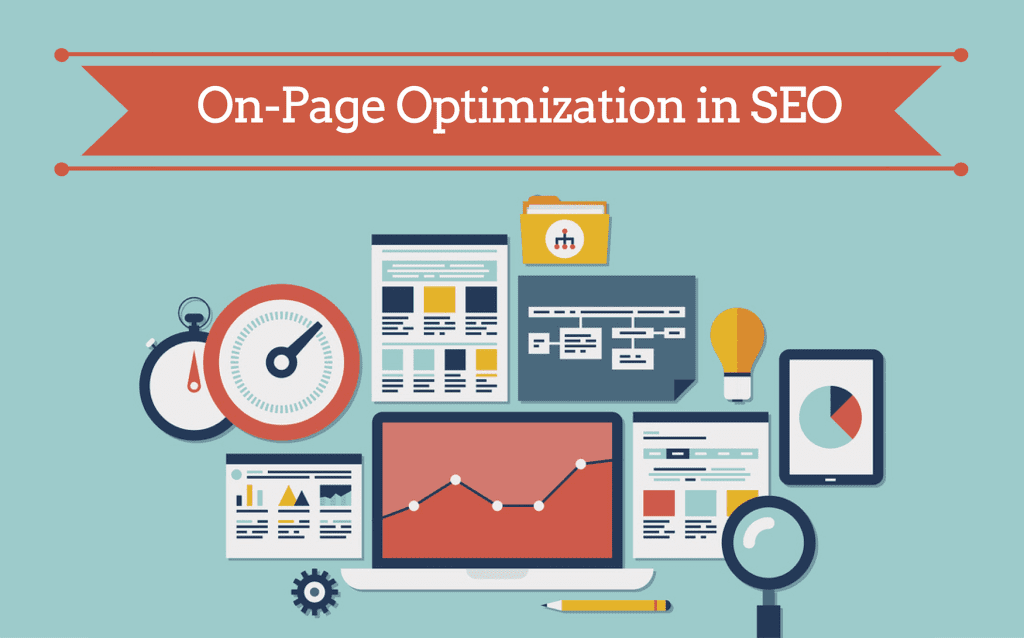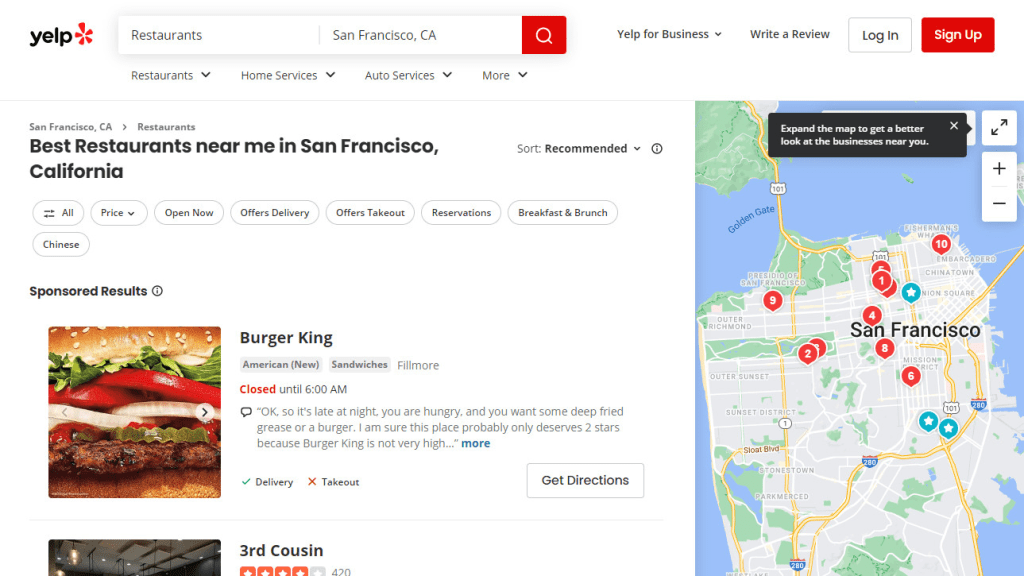Key Takeaways
- Master the Basics: Lay a solid foundation by understanding the evolution and essentials of SEO, from keywords to algorithmic nuances.
- Strategic Optimization: Explore on-page brilliance, off-page strategies, and technical finesse to enhance your website’s performance and visibility.
- Data-Driven Excellence: Navigate the SEO landscape with insightful monitoring and analytics, ensuring informed decision-making for sustained success.
Welcome to the digital realm, where the language of search engines reigns supreme, and the art of visibility is mastered through the intricate dance of algorithms and keywords.
In a world dominated by online presence, becoming an SEO expert is not just a skill; it’s a strategic necessity.
Whether you’re a digital marketer, a business owner, or an aspiring professional seeking to unlock the secrets of online discoverability, this comprehensive guide is your gateway to mastering the five essential steps to becoming an SEO maestro.
In the vast landscape of the internet, where countless websites jostle for attention, understanding the nuances of Search Engine Optimization (SEO) is akin to wielding a magical wand that can propel your content to the forefront of search engine results.
This blog is not merely a guide; it’s a roadmap to demystifying the complexities of SEO, empowering you to transform your online presence and catapult your content into the spotlight.

The Evolution of SEO: A Prelude
Before we delve into the quintessential steps that pave the way to SEO mastery, let’s take a moment to appreciate the evolution of search engine optimization.
From the early days of the internet, when basic algorithms dictated search rankings, to the sophisticated algorithms of today that consider a myriad of factors, SEO has undergone a fascinating transformation.
As search engines like Google continually refine their algorithms to enhance user experience, the journey to becoming an SEO expert has become both an art and a science.
No longer is SEO confined to keyword stuffing and link building; it has evolved into a multifaceted discipline that demands a holistic approach, incorporating technical finesse, content prowess, and a keen understanding of user behaviour.
Why Become an SEO Expert?
In an era where online visibility directly translates to business success, the question is not why become an SEO expert, but rather, can you afford not to be?
Imagine having the ability to harness the power of search engines to amplify your message, attract organic traffic, and establish your digital footprint.
Being an SEO expert is not just about understanding the algorithms; it’s about deciphering the language of your target audience and strategically positioning your content where they’re most likely to find it.
Moreover, with businesses vying for attention in an oversaturated digital landscape, having a solid grasp of SEO principles is a professional differentiator.
Whether you’re a marketer looking to skyrocket your brand’s online presence or an entrepreneur seeking to carve a niche in the digital marketplace, the expertise to navigate the intricate terrain of SEO is your competitive advantage.
The Promise of 5 Easy Steps
Now, let’s embark on a transformative journey that demystifies the art of SEO.
The promise of this guide lies in its simplicity – five easy steps that will unravel the complexities of SEO and empower you to ascend the ranks of search engine prominence.
From laying the foundational knowledge of SEO basics to mastering the intricacies of technical optimization, this guide is your compass in the digital wilderness.
So, buckle up and get ready to embark on a journey that goes beyond the surface-level tips and tricks.
This is not just a guide; it’s your ticket to becoming an SEO virtuoso.
As we navigate through the five steps, remember: that mastery is not an endpoint; it’s a continuous pursuit. The world of SEO is dynamic, and this guide is your companion in staying ahead of the curve.
Are you ready to transform your digital presence and unlock the full potential of SEO?
Let’s dive into the first step – Understanding the Basics of SEO – and set the stage for your journey to SEO expertise.
Before we venture further, we like to share who we are and our digital experiences.
About AppLabx
From developing a solid marketing plan to creating compelling content, optimizing for search engines, leveraging social media, and utilizing paid advertising, AppLabx offers a comprehensive suite of digital marketing services designed to drive growth and profitability for your business.
AppLabx is well known for helping companies and startups use SEO to drive web traffic to their websites and web apps.
At AppLabx, we understand that no two businesses are alike. That’s why we take a personalized approach to every project, working closely with our clients to understand their unique needs and goals, and developing customized strategies to help them achieve success.
If you need a digital consultation, then send in an inquiry here.
How To Become an SEO Expert in 5 Easy Steps
- Understanding the Basics of SEO
- On-Page SEO Optimization
- Off-Page SEO Strategies
- Technical SEO Mastery
- Monitoring and Analytics
1. Understanding the Basics of SEO
Search Engine Optimization (SEO) is the cornerstone of online visibility, a strategic process designed to enhance a website’s visibility in search engine results.
At its core, SEO aims to align a website’s content with the intent of users, ensuring that when someone searches for a particular query, the relevant information is delivered to them effectively.

Why Does SEO Matter?
- User Intent and Relevance:
- Example: Consider a user searching for “best budget smartphones.” An SEO-optimized website offering a comprehensive guide to affordable smartphones is more likely to appear at the top, aligning with the user’s intent.
- Traffic and Credibility:
- According to a study, the first result in Google’s organic search results had an average CTR of 31.7%. The importance of ranking high cannot be overstated.
- Business Impact:
- 72% of consumers who did a local search visited a store within five miles. SEO isn’t just about online visibility; it directly impacts foot traffic for local businesses.
The Anatomy of Search Engines
Understanding SEO begins with grasping the fundamental elements of search engines and how they operate.
Crawling and Indexing:
- Search engines use crawlers (bots) to navigate the web and index content. Websites are indexed based on relevance and quality.
- Example: Imagine Google’s crawler as a digital librarian categorizing books. Your website needs to be a well-organized book that the librarian (crawler) finds valuable.
Algorithms:
- Search engines employ complex algorithms to determine the order of search results. These algorithms consider various factors, including relevance, freshness, and user experience.
- Google considers more than 200 different ranking factors when determining the relevance and quality of a web page.
Ranking Factors:
- Numerous elements influence search rankings, including keywords, backlinks, page speed, and mobile-friendliness.
- Example: Websites using relevant keywords naturally within their content have a higher chance of ranking for related queries.
The Role of Keywords
Keywords are the building blocks of SEO, representing the terms users input into search engines.
Keyword Research:
- Identifying and targeting the right keywords is crucial. Tools like Google Keyword Planner help in understanding search volume and competition.
- It is known that long-tail keywords account for 70% of all web searches.
On-Page Optimization:
- Incorporate chosen keywords strategically in titles, meta descriptions, headers, and content to signal relevance to search engines.
- Example: An article on “Digital Marketing Trends 2023” should naturally include this phrase in key areas.
Content Quality and Relevance
Content is the heartbeat of SEO, and its quality directly impacts search rankings.
Valuable Content:
- Creating content that addresses user queries, provides solutions, and offers value is paramount.
- A study found that content with good images gets 94% more views than those without.
User Experience:
- A user-friendly website with easy navigation and fast loading times enhances the overall experience, positively influencing rankings.
- 47% of users expect a webpage to load in 2 seconds or less.
The Importance of Backlinks
Backlinks, or incoming links from other websites, are a key factor in SEO.
Quality Over Quantity:
- High-quality, relevant backlinks are more valuable than a sheer volume of links.
- Example: A backlink from a reputable industry website carries more weight than multiple links from unrelated sources.
Link Building Strategies:
- Guest blogging, influencer outreach, and creating shareable content are effective ways to build a strong backlink profile.
- In a study, pages with the highest number of total backlinks tended to rank best in Google.
Mobile-Friendliness and Technical SEO
As mobile usage continues to soar, mobile-friendliness is a critical aspect of SEO.
Responsive Design:
- Websites that adapt seamlessly to various devices enhance user experience and receive preferential treatment from search engines.
- In the first quarter of 2023, mobile devices (excluding tablets) generated 58.33 per cent of global website traffic.
Technical Optimization:
- Addressing technical aspects like site speed, fixing crawl errors, and optimizing XML sitemaps contributes to overall SEO health.
- Research has shown that even a one-second delay in page load time can lead to a 7% reduction in conversions.
2. On-Page SEO Optimization

Crafting SEO-Friendly Content
Creating content that not only captivates your audience but also aligns with search engine algorithms is at the heart of On-Page SEO Optimization.
Quality Content and Rankings:
- High-quality, informative, and engaging content is more likely to rank well in search engine results.
- Example: A blog post that thoroughly explains a complex concept with well-researched insights demonstrates expertise and attracts organic traffic.
Content-Length Matters:
- Longer-form content often performs better in search results. Aim for in-depth articles that thoroughly cover a topic.
- According to Backlinko, the average word count of a Google first-page result is around 1,447 words.
Optimizing Title Tags and Meta Descriptions
Title tags and meta descriptions are your content’s first impression in search results, influencing click-through rates.
Title Tags:
- Craft compelling titles that not only include the target keyword but also entice users to click.
- Example: Instead of “Digital Marketing Trends,” opt for “Unlocking the Future: 2023 Digital Marketing Trends Revealed.”
Meta Descriptions:
- Write concise, engaging meta descriptions that summarize the content and encourage clicks.
- Meta descriptions can technically be any length, but Google generally truncates snippets from 155-160 characters.
Proper Use of Headers and Subheadings
Headers and subheadings organize content, making it more accessible to both readers and search engines.
Hierarchy and Structure:
- Implement a clear hierarchy with H1 for the main title, followed by H2, H3, and so on. This helps search engines understand content flow.
- Example: A blog post on “Healthy Recipes” might have H2s for “Breakfast,” “Lunch,” and “Dinner.”
Keyword Placement:
Include target keywords in headers where relevant, reinforcing the content’s topical relevance.
Image Optimization Techniques
Images not only enhance user experience but also contribute to SEO when optimized effectively.
File Size and Compression:
- Compress images to reduce file size without compromising quality, improving page loading times.
- Google indicates that the size limit for all image ads is 150 kilobytes.
Descriptive Alt Text:
- Include descriptive alt text for images, as search engines use this information to understand the content.
- Example: Instead of “IMG_1234,” use alt text like “Healthy_Vegetarian_Salad.”
Linking Strategies for On-Page SEO
Internal and external links play a crucial role in signalling content relevance and establishing authority.
Internal Linking:
- Connect related content through internal links, guiding users to additional resources.
- Organizations with websites of 401-1000 pages get 6 times more leads than sites with 51-100 pages.
External (Outbound) Links:
- Link to reputable sources when relevant, contributing to your content’s credibility.
- Example: In a marketing guide, linking to industry reports from trusted organizations enhances your content’s reliability.
User Experience and Page Speed
Google considers user experience factors, including page speed, as crucial ranking elements.
Page Loading Times:
- Optimize images, leverage browser caching, and utilize Content Delivery Networks (CDNs) to improve page loading times.
- Google recommends a server response time under 200 milliseconds.
Mobile Optimization:
- Ensure your website is mobile-friendly, providing a seamless experience across devices.
- Mobile users are five times more likely to abandon a task if the site isn’t optimized for mobile.
3. Off-Page SEO Strategies
This is the art of establishing your website’s credibility and relevance through external factors.
In this section, we’ll explore the key strategies that extend beyond the confines of your web pages, encompassing backlinks, social signals, and other external elements that contribute to your site’s prominence in search engine results.

Importance of Backlinks: The Backbone of Off-Page SEO
Backlinks, or incoming links from other websites, are a pivotal factor in search engine algorithms, acting as a vote of confidence for your content.
Quality Over Quantity:
- Backlinks from authoritative and relevant websites have a more significant impact on your SEO strategy compared to low-quality or spammy backlinks.
- Example: A backlink from an industry-leading blog or news outlet carries more weight than numerous links from unrelated or low-authority websites.
Diverse Anchor Text:
- Use diverse anchor text in backlinks to avoid appearing manipulative. Natural variations signal authenticity to search engines.
- Example: Instead of repeatedly using the exact match keyword, mix in variations and synonyms within the anchor text.
Link Building Strategies: Crafting a Robust Backlink Profile
Link building is an ongoing process that involves strategically acquiring backlinks to enhance your website’s authority.
Guest Blogging:
- Contribute high-quality guest posts to authoritative websites in your niche, including a relevant link back to your site.
- Increasing the number of high-quality backlinks can have a direct impact on the amount of referral traffic your website receives.
Influencer Outreach:
- Collaborate with influencers in your industry for content co-creation or endorsements, leading to valuable backlinks.
- Example: An influencer sharing your content on social media or linking to it from their blog can significantly boost your site’s visibility.
Social Signals: Harnessing the Power of Social Media
Social signals, such as likes, shares, and comments on social media platforms, contribute to your site’s authority.
Social Sharing and SEO:
- Encourage social sharing of your content, as it not only increases visibility but also sends positive signals to search engines.
- A study by Search Engine Journal found a correlation between social signals and higher search rankings.
Social Media Profiles:
- Optimize your social media profiles with accurate business information and a link back to your website.
- Example: An optimized LinkedIn profile with a link to your site adds credibility and facilitates cross-channel engagement.
Brand Mentions and Citations: Nurturing Online Brand Presence
Being mentioned and cited across the web contributes to your site’s credibility and reinforces its digital footprint.

Online Directories and Listings:
- Ensure your business is listed accurately on online directories and local listings.
- Example: A restaurant listed on platforms like Yelp or TripAdvisor not only gains visibility but also builds trust among potential customers.

Brand Monitoring:
- Monitor brand mentions using tools like Google Alerts and engage with users mentioning your brand online.
- According to a survey, around 89% of consumers say they make an effort to read reviews before buying products online.
The Power of Co-Creation: Collaborative Content and Partnerships
Collaborative efforts with other businesses or influencers can amplify your content’s reach and impact.
Content Partnerships:
- Collaborate with industry partners on joint content projects, leveraging each other’s audiences.
- Co-created content often attracts more shares and engagement due to its diverse appeal.
Interviews and Features:
- Seek opportunities for interviews or features on podcasts, webinars, or industry publications, earning backlinks in the process.
- Example: An interview on a reputable industry podcast not only provides exposure but also results in a valuable backlink from the show’s website.

4. Technical SEO Mastery
Technical SEO serves as the backbone of your website’s performance in search engine rankings.
In this section, we will delve into the intricacies of technical optimization, from website speed to crawlability, ensuring that your site not only ranks well but also provides a seamless user experience.

Prioritizing Website Speed: The Need for Swift Loading Times
The speed at which your website loads is not only a user experience factor but a crucial determinant in search engine rankings.
Impact on User Experience:
- Google’s research indicates that as page load time goes from one second to ten seconds, the probability of a mobile site visitor bouncing increases by 123%.
- Example: One-second delay on Amazon could cost $1.6 billion in sales every year.
Tools for Measurement:
Utilize tools like Google PageSpeed Insights or GTmetrix to analyze and optimize your site’s loading times.
Mobile Optimization: Catering to the Mobile-First Era
As mobile usage continues to dominate, Google prioritizes mobile-friendly websites in its rankings.
Responsive Design:
Ensure your website has a responsive design that adapts seamlessly to various screen sizes.
Mobile Page Speed:
- Optimize your site for mobile page speed, as slow-loading mobile pages can negatively impact rankings.
- The probability of bounce increases 32% as page load time goes from 1 second to 3 seconds.
Technical Aspects of Crawling: Guiding Search Engine Bots Effectively
Search engine bots navigate your website to understand its structure and content. Ensuring efficient crawling is a key aspect of technical SEO.
Robots.txt and XML Sitemaps:
- Optimize your robots.txt file to guide search bots on which pages to crawl and which to avoid.
- Submit an XML sitemap to search engines to provide a blueprint of your site’s structure.
Crawl Errors:
Regularly monitor and address crawl errors using tools like Google Search Console to maintain a healthy site.
Website Architecture: Ensuring a Seamless User Journey
A well-structured website not only aids user navigation but also facilitates search engine understanding.
Logical Hierarchy:
- Organize your site with a clear and logical hierarchy using proper header tags (H1, H2, H3, etc.).
- Example: An e-commerce site should have categories (H2) and subcategories (H3) under each main product section (H1).
Internal Linking Structure:
Implement a strategic internal linking structure to guide users and distribute link authority across your site.
SSL Certificates: Security as a Ranking Signal
Security is a key concern for both users and search engines. Implementing SSL certificates is a best practice.
Secure Sockets Layer (SSL):
- Install an SSL certificate to enable HTTPS on your site, ensuring secure data transfer.
- Google has seen positive results, so it’s starting to use HTTPS as a ranking signal.
User Trust:
A secure website builds trust among users, contributing to higher conversion rates and lower bounce rates.
Page Structure and Semantics: Enhancing Content Relevance
Structured data and semantic markup help search engines better understand the context and relevance of your content.
Schema Markup:
- Implement schema markup to provide additional context to search engines, potentially resulting in rich snippets in search results.
- Example: A recipe with schema markup can display cooking time, ingredients, and reviews directly in search results.
Header Tags for Semantic Structure:
Use header tags to create a semantic structure that reinforces the main topics and subtopics of your content.
5. Monitoring and Analytics
Monitoring and analytics are the compass that guides your journey to SEO expertise. In this section, we’ll explore the crucial role of data-driven insights in refining your strategies and achieving sustained success in the dynamic world of search engine optimization.

Setting the Stage: The Importance of Monitoring
Monitoring involves keeping a watchful eye on various aspects of your website’s performance and user interactions.
User Behavior: Understanding Your Audience
- Leverage tools like Google Analytics to gain insights into user behaviour, such as pages visited, time spent, and conversion paths.
- Google Analytics provides detailed reports on user demographics, interests, and devices used to access your site.
Real-time Monitoring: Staying Informed
Utilize real-time monitoring tools to stay informed about sudden spikes or drops in traffic, enabling rapid response to emerging trends or issues.
Data-Driven Decision Making: The Power of Analytics
Analytics is the cornerstone of informed decision-making in SEO, providing valuable insights into the effectiveness of your strategies.
Key Performance Indicators (KPIs): Defining Success Metrics
- Identify and track KPIs relevant to your goals, such as organic traffic, conversion rates, and keyword rankings.
- 93% of online experiences begin with a search engine.
Conversion Tracking: Measuring Success
- Implement conversion tracking to attribute specific actions (e.g., form submissions, and purchases) to their sources.
- Example: Knowing which keywords or channels lead to the most conversions allows you to allocate resources strategically.
Google Analytics Mastery: Extracting Insights
Google Analytics is a powerhouse tool offering a plethora of insights that can shape your SEO strategy.
Behaviour Reports: Analyzing User Interaction
- Explore Behavior Reports to understand how users interact with your site, including popular pages, navigation patterns, and exit pages.
- Analyzing behaviour can uncover opportunities for content optimization and user experience enhancements.
Acquisition Reports: Uncovering Traffic Sources
- Utilize Acquisition Reports to identify the sources of your website traffic, distinguishing between organic, paid, and referral sources.
- Example: Discovering a significant uptick in organic traffic from a specific keyword can guide content creation around related topics.
Search Console Insights: Unveiling Performance Metrics
Google Search Console is a treasure trove of information about how your site performs in search results.
Search Performance: Monitoring Search Queries
- Analyze Search Performance reports to uncover the queries for which your site appears in search results and track changes over time.
- The first page of Google captures 71% of search traffic clicks.
Index Coverage: Ensuring Visibility
- Regularly check the Index Coverage report to identify and address any indexing issues that may affect your site’s visibility.
- Example: Identifying pages with indexing errors allows for prompt resolution to avoid a drop in search rankings.
Competitor Analysis: Gaining a Strategic Edge
Monitoring competitors provides valuable insights into their strategies and industry trends.
Identifying Competitors: Know Your Rivals
- Identify key competitors in your industry or niche using tools like SEMrush or Ahrefs.
- According to a survey, backlinks remain a significant factor in Google’s ranking factor.
Keyword Gap Analysis: Seizing Opportunities
- Conduct a keyword gap analysis to identify keywords your competitors rank for but do not, allowing you to seize untapped opportunities.
- Example: If a competitor ranks well for a keyword related to your business, it may indicate a potential gap in your content strategy.
Monitoring Algorithm Updates: Staying Ahead of Changes
Search engines continually update their algorithms, impacting search results and SEO strategies.
Search Engine News: Keeping Abreast of Updates
- Regularly follow reputable sources for search engine news, such as Google’s official blog and industry publications.
- Google claims to update its search algorithm several thousand times per year.
Monitoring SERP Changes: Adapting to Shifts
- Use tools like Mozcast or SEMrush Sensor to monitor fluctuations in the search engine results pages (SERPs), signalling potential algorithm changes.
- Example: A sudden drop in rankings across various keywords may indicate a broader algorithmic shift.
Conclusion
Embarking on the journey to become an SEO expert is akin to setting sail on a digital odyssey, navigating the vast seas of search algorithms, keywords, and ever-evolving strategies.
Through this comprehensive guide, we have delved into the five fundamental steps that pave the way for SEO mastery.
From understanding the basics to mastering on-page and off-page optimization, technical finesse, and the art of monitoring and analytics, you’ve equipped yourself with the tools to conquer the dynamic landscape of search engine optimization.
Unraveling the Basics
In the opening chapters of this SEO saga, you laid the foundation by understanding the evolution of SEO, the why behind its importance, and the promise of unraveling its intricacies in just five easy steps.
We explored the very fabric of SEO, witnessing its evolution from a simplistic keyword game to a nuanced discipline that demands a holistic approach.
Mastering On-Page Brilliance
With the basics firmly in place, you ventured into the realm of on-page SEO optimization. Crafting content that not only resonates with users but aligns seamlessly with search engine algorithms became your art.
You learned the alchemy of title tags, meta descriptions, headers, and the delicate dance of keywords within your content, ensuring your pages shine brightly on the search engine stage.
Navigating the Off-Page Horizon
As your SEO voyage continued, you explored the seas beyond your website’s shores in the domain of off-page SEO strategies. Backlinks, social signals, and brand mentions became the winds that propelled your digital vessel.
Through collaborative efforts, strategic link building, and a careful choreography of your online brand presence, you solidified your site’s authority in the eyes of search engines.
Harnessing Technical SEO Mastery
The technical symphony played a crucial role in your odyssey. From ensuring swift loading times and mobile optimization to crafting a well-structured website architecture, you mastered the technical intricacies that underpin a website’s performance.
SSL certificates became your shield against digital threats, and semantic markup added layers of meaning to your content.
Navigating with Monitoring and Analytics
As a seasoned SEO explorer, you embraced the power of data-driven decision-making through monitoring and analytics.
Google Analytics and Search Console became your navigational tools, guiding you through the labyrinth of user behavior, search queries, and indexing intricacies.
Competitor analysis sharpened your strategic edge, and real-time monitoring kept you agile in the face of emerging trends.
Setting Sail Toward SEO Mastery
In the grand tapestry of SEO expertise, this guide has provided the threads to weave your narrative. The quest for mastery is a dynamic voyage, and as you set sail armed with these insights, remember that the SEO landscape is ever-changing.
The odyssey to becoming an SEO expert is not a linear path but a continuous evolution. Adaptability, curiosity, and a passion for refining your craft will steer your ship through the waves of algorithmic changes and digital trends.
As you navigate the seas of SEO, may your journey be marked by discoveries, triumphs, and a continuous pursuit of excellence. The world of SEO awaits your expertise – set forth and make waves.
If you are looking for a top-class digital marketer, then book a free consultation slot here.
If you find this article useful, why not share it with your friends and business partners, and also leave a nice comment below?
We, at the AppLabx Research Team, strive to bring the latest and most meaningful data, guides, and statistics to your doorstep.
To get access to top-quality guides, click over to the AppLabx Blog.
People also ask
How do I become an expert SEO?
- To become an expert in SEO, start by mastering the basics of keyword research, on-page optimization, and content creation.
- Dive into off-page strategies, understand technical SEO, and stay updated on industry trends.
- Apply your knowledge through practical projects and continually refine your skills.
- Engage with the SEO community, attend conferences, and leverage online resources for continuous learning.
- Adaptability, hands-on experience, and a passion for staying informed will propel you toward SEO expertise.
How can I do SEO easily?
- To simplify SEO, begin with keyword research using tools like Google Keyword Planner.
- Optimize your website’s on-page elements, create high-quality content, and secure relevant backlinks.
- Use user-friendly URLs and ensure mobile optimization.
- Leverage SEO plugins for platforms like WordPress.
- Regularly monitor performance with tools like Google Analytics.
- Stay updated with industry trends for ongoing success in SEO.
How do I start my SEO career?
- Initiate your SEO career by learning the fundamentals through online courses or resources.
- Gain hands-on experience with personal projects or internships.
- Master tools like Google Analytics and familiarize yourself with industry trends.
- Network with SEO professionals, showcase your skills through a portfolio, and stay adaptable to evolving algorithms.
































